Foundation work is wrapping up on Society Brooklyn and Sackett Place, a pair of 21-story residential buildings at 267 Bond Street and 498 Sackett Street in Gowanus, Brooklyn. Designed by SLCE Architects and developed by Property Markets Group, which acquired both plots for $9 million in 2021, the complex will yield a combined 594,000 square feet with 517 residential units and 52,000 square feet of commercial space. The development is proceeding with $18.5 million in financing from Maxim Capital Group. Urban Atelier Group is the general contractor for the project, which is bound by DeGraw Street to the north, Sackett Street to the south, the Gowanus Canal to the east, and Bond Street to the west.
The following photos show the state of progress on 267 Bond Street at the northern end of the site. This tower is planned to span 364,000 square feet and yield 344 residential units and 32,000 square feet of commercial space. The reinforced concrete foundations have reached street level, and steel rebar protrudes across the property in preparation for the formation of the building’s core and interior columns.
Below are images of 498 Sackett Street, which was formerly occupied by Bayside Fuel Oil Corp. The foundations appear to be at the same stage as 267 Bond Street, with the rise of the superstructure likely imminent. This building is planned to yield 230,000 square feet with 173 units and approximately 20,000 square feet of commercial space.
The main rendering was recently released by Property Markets Group and depicts the buildings with an architecturally cohesive design. Both towers rise from brick-clad podiums topped with landscaped amenity decks, and feature dark glass curtain walls across all four sides. The towers are capped with identical glass-clad mechanical bulkheads. A public waterfront esplanade spanning nearly 20,000 square feet will feature raised garden beds, wooden tables and seating, and plentiful landscaping lining the eastern side along the Gowanus Canal.

267 Bond Street (background) and 498 Sackett Street (foreground). Developed by Property Markets Group.
Some of the listed amenities include a lobby restaurant and bar, a gym, a co-working lab, and a sky pool deck, which can be seen in the renderings. The nearest subway is the R train at the Union Street station to the east along 4th Avenue.
267 Bond and 498 Sackett Streets both have an anticipated completion date of July 2024, though YIMBY estimates construction to finish sometime closer to the end of next year or early 2025.
Subscribe to YIMBY’s daily e-mail
Follow YIMBYgram for real-time photo updates
Like YIMBY on Facebook
Follow YIMBY’s Twitter for the latest in YIMBYnews


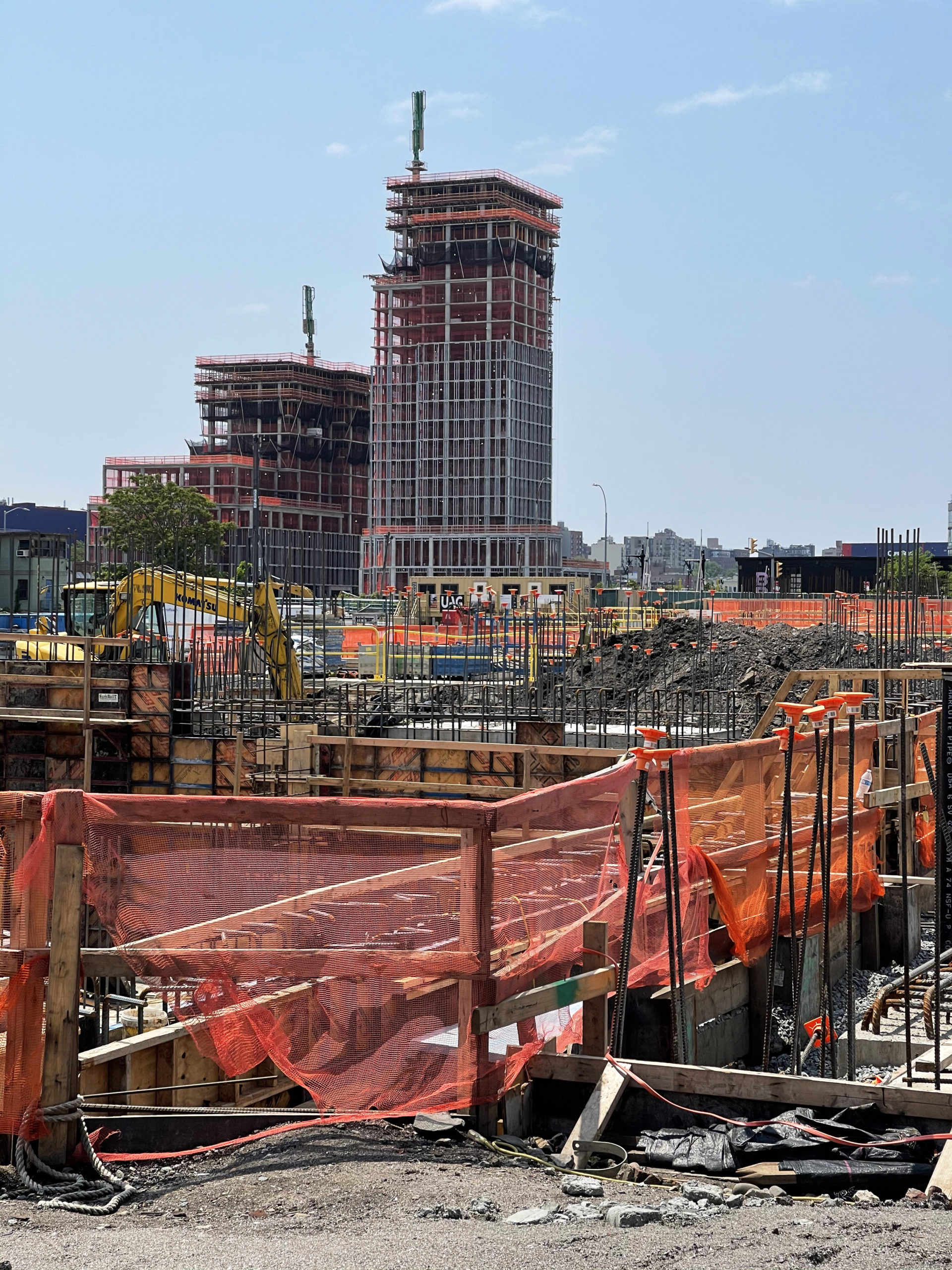
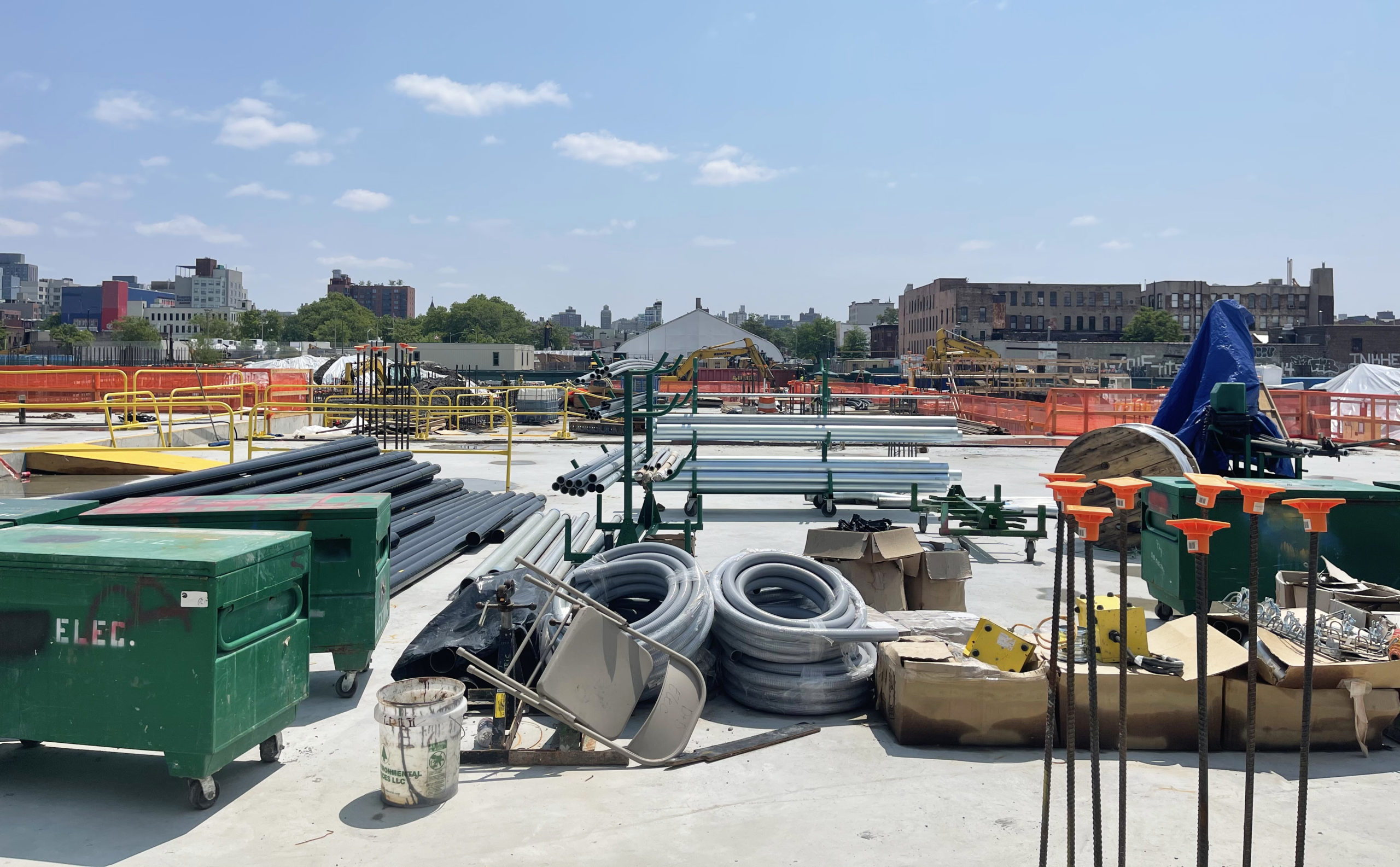
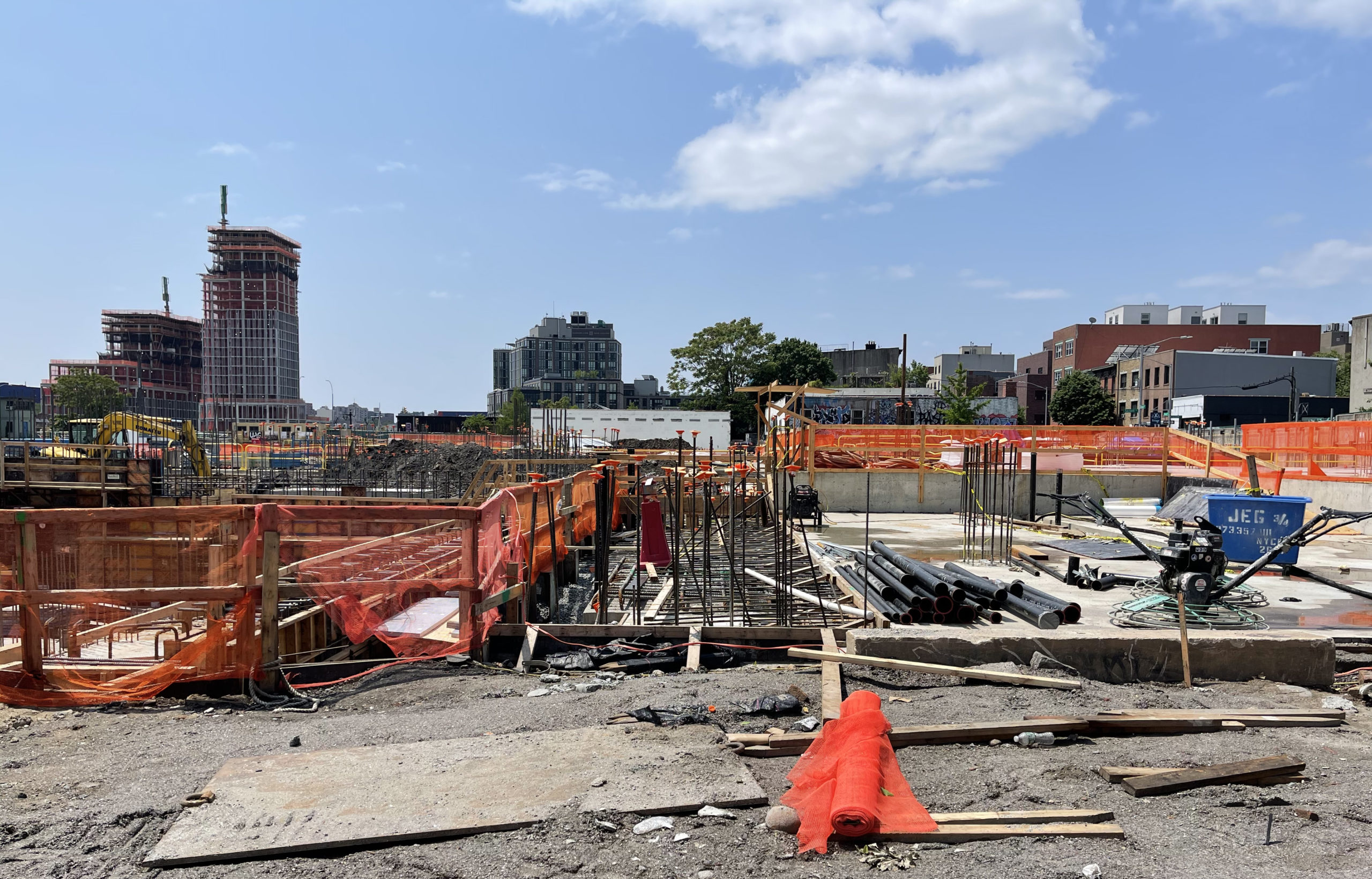


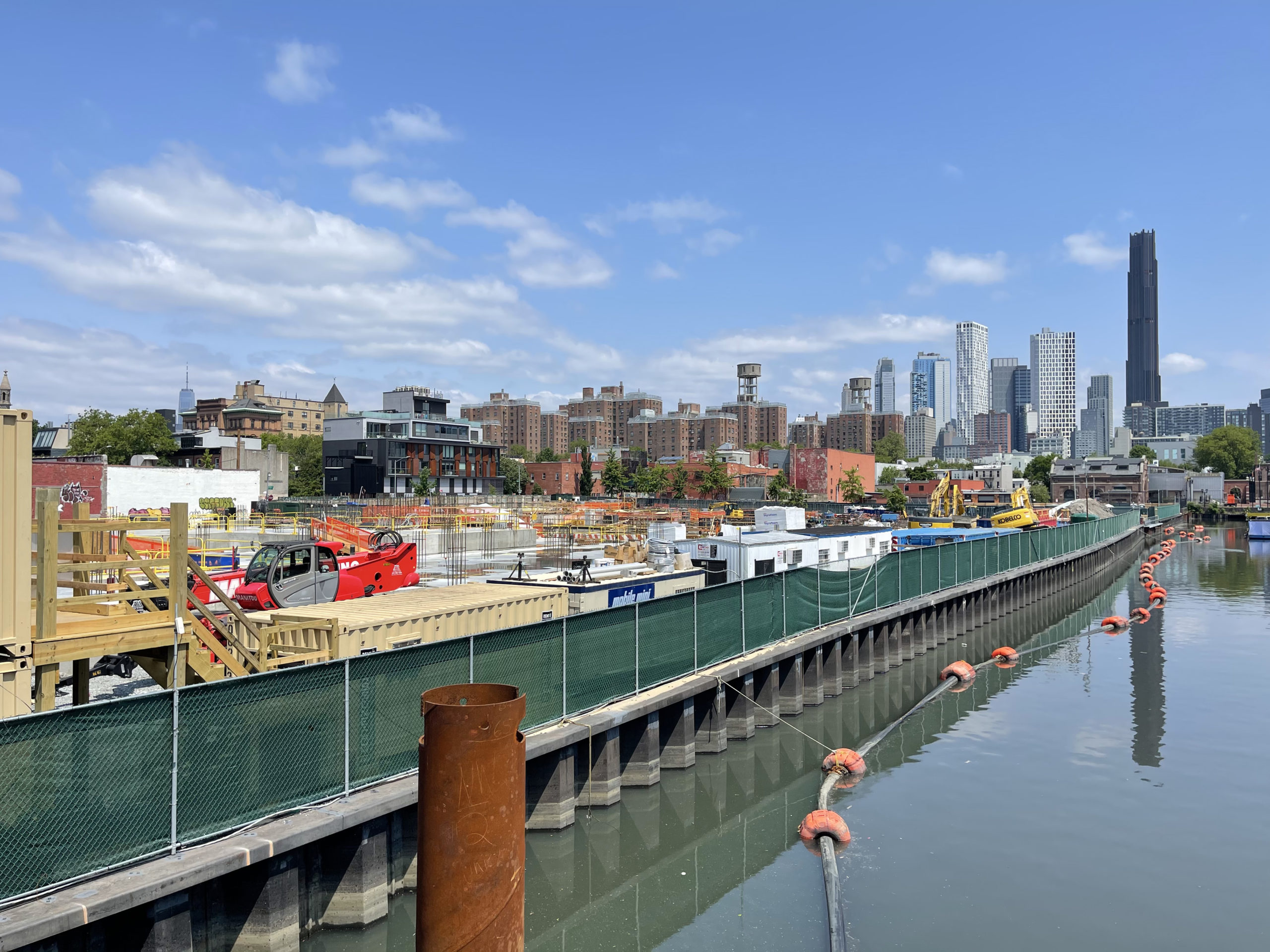
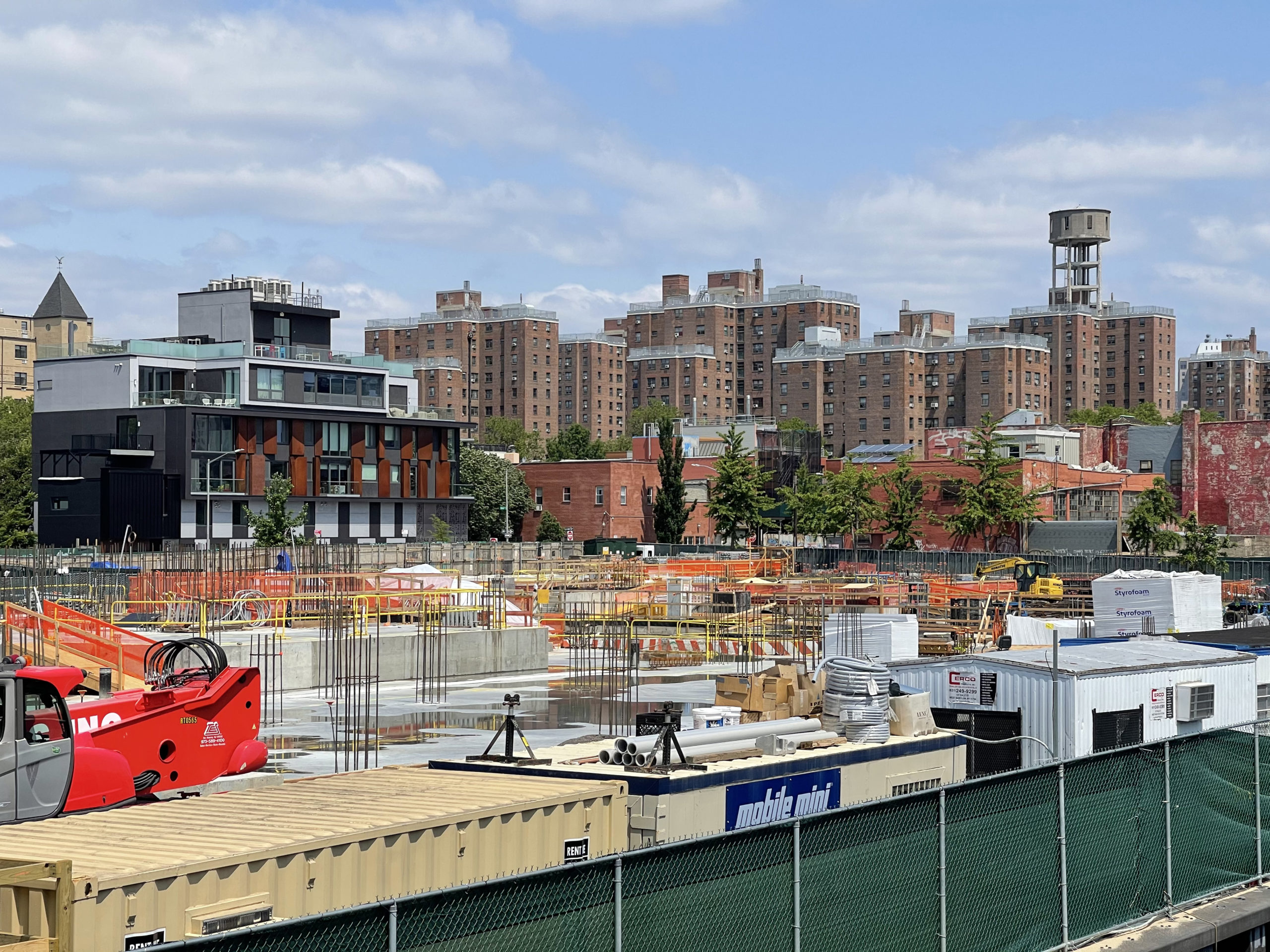
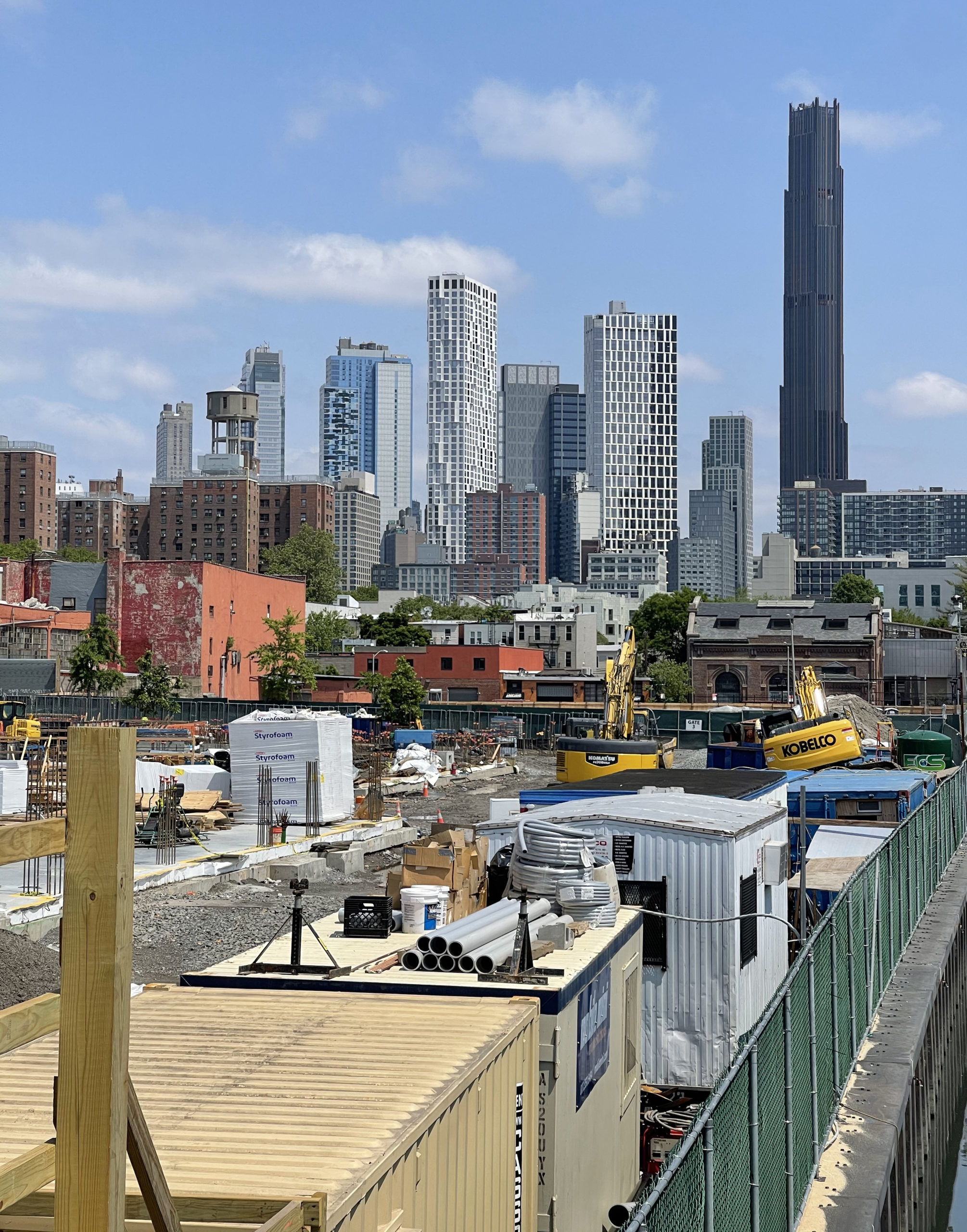
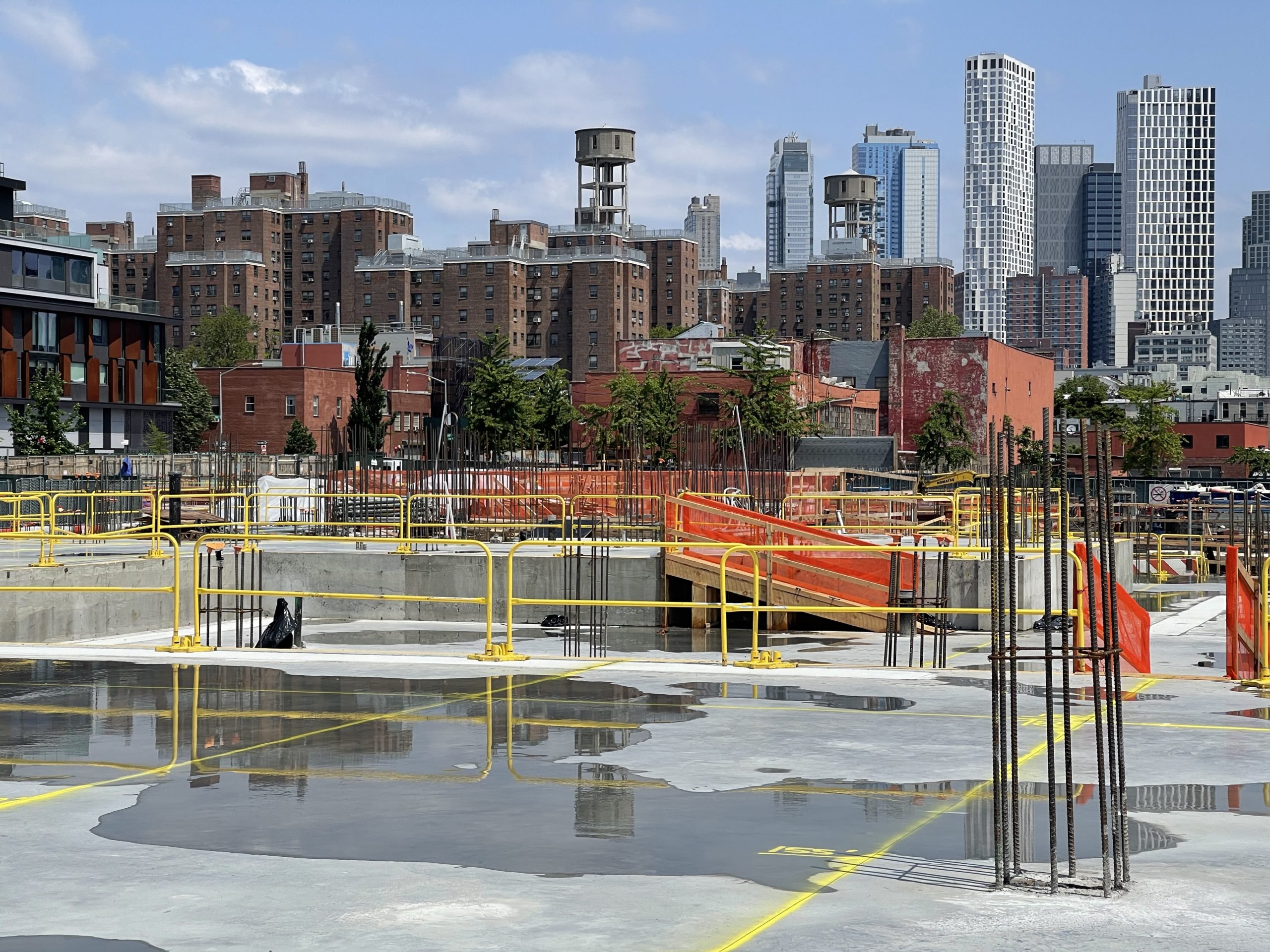
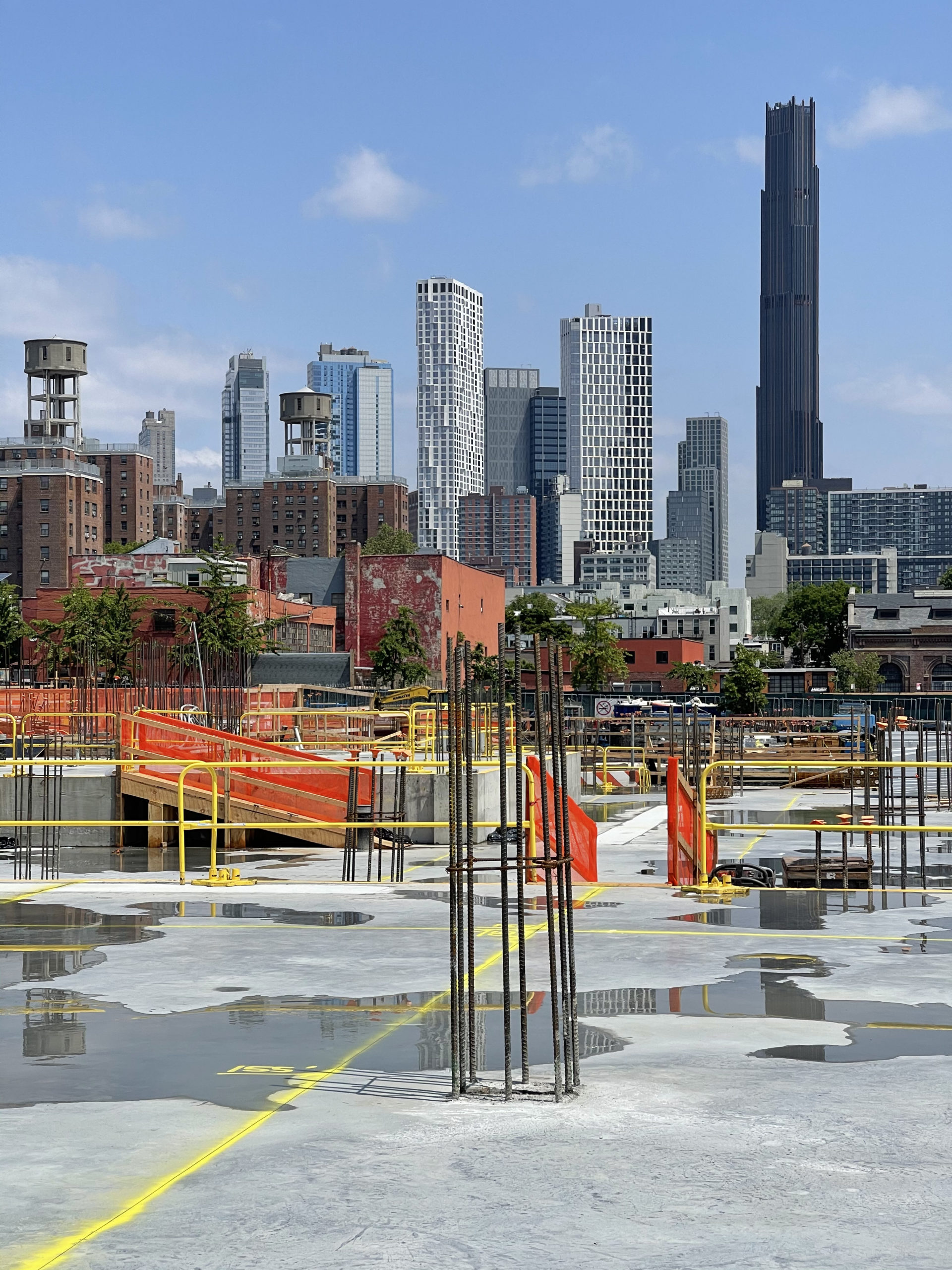
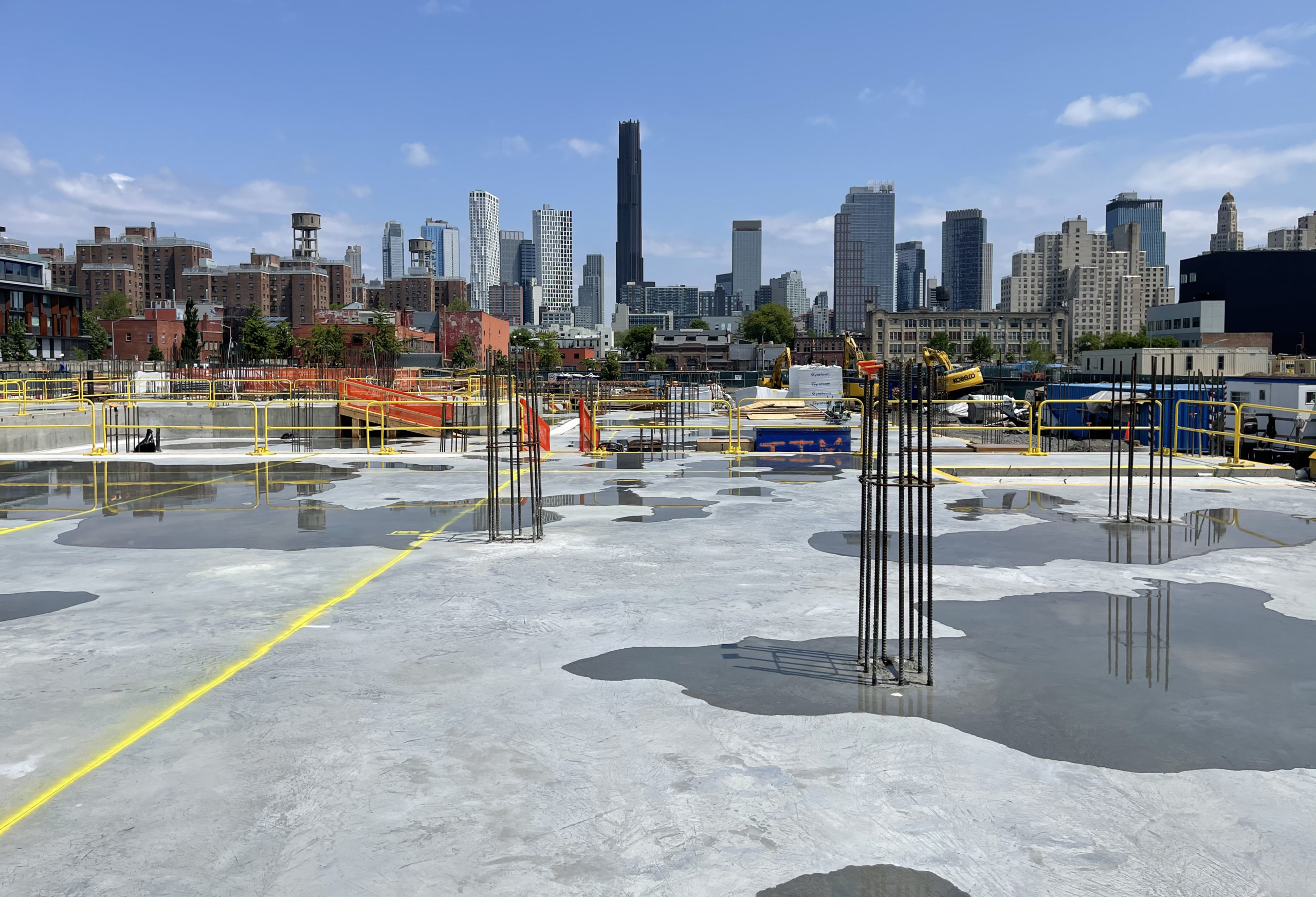
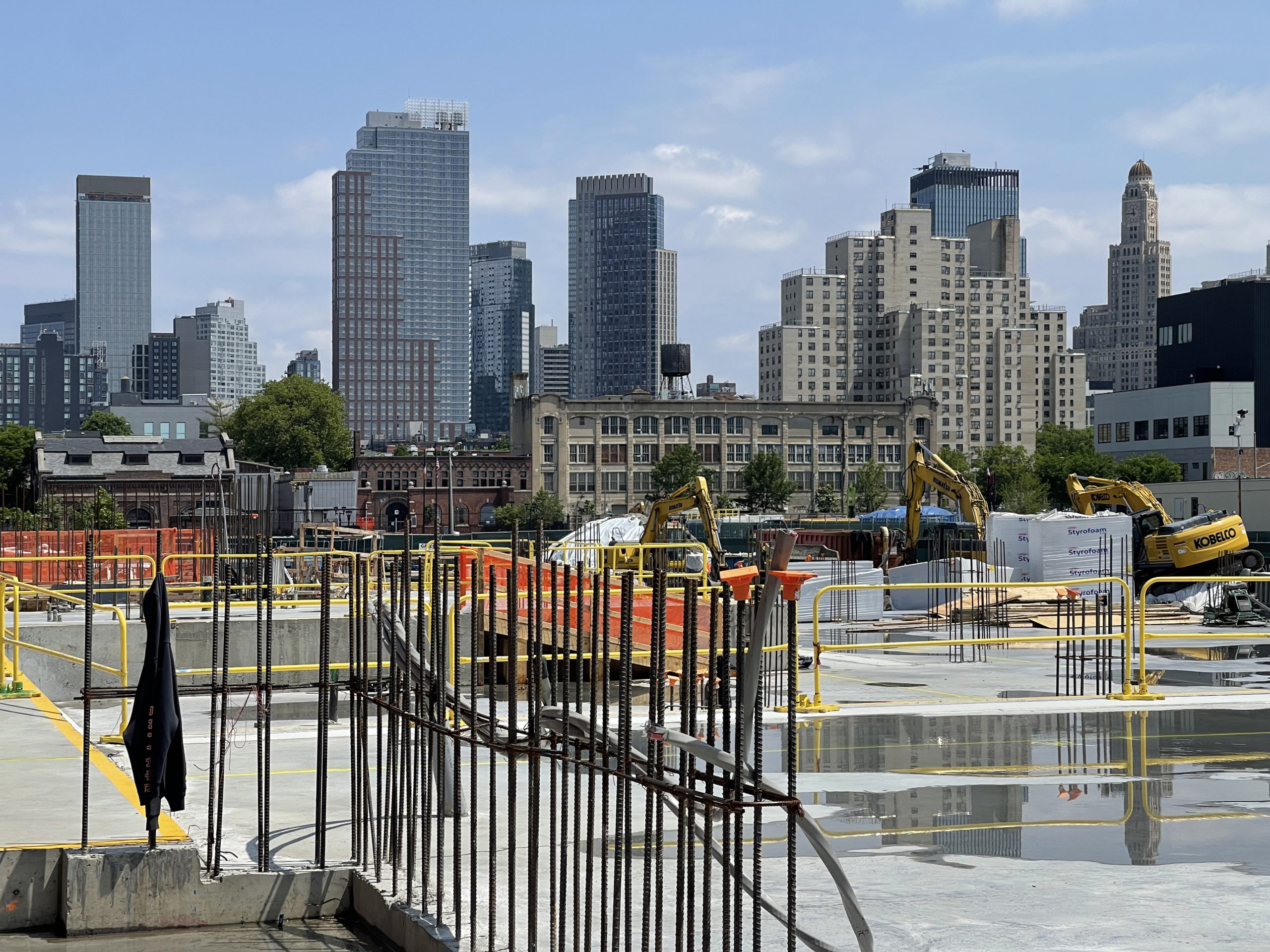
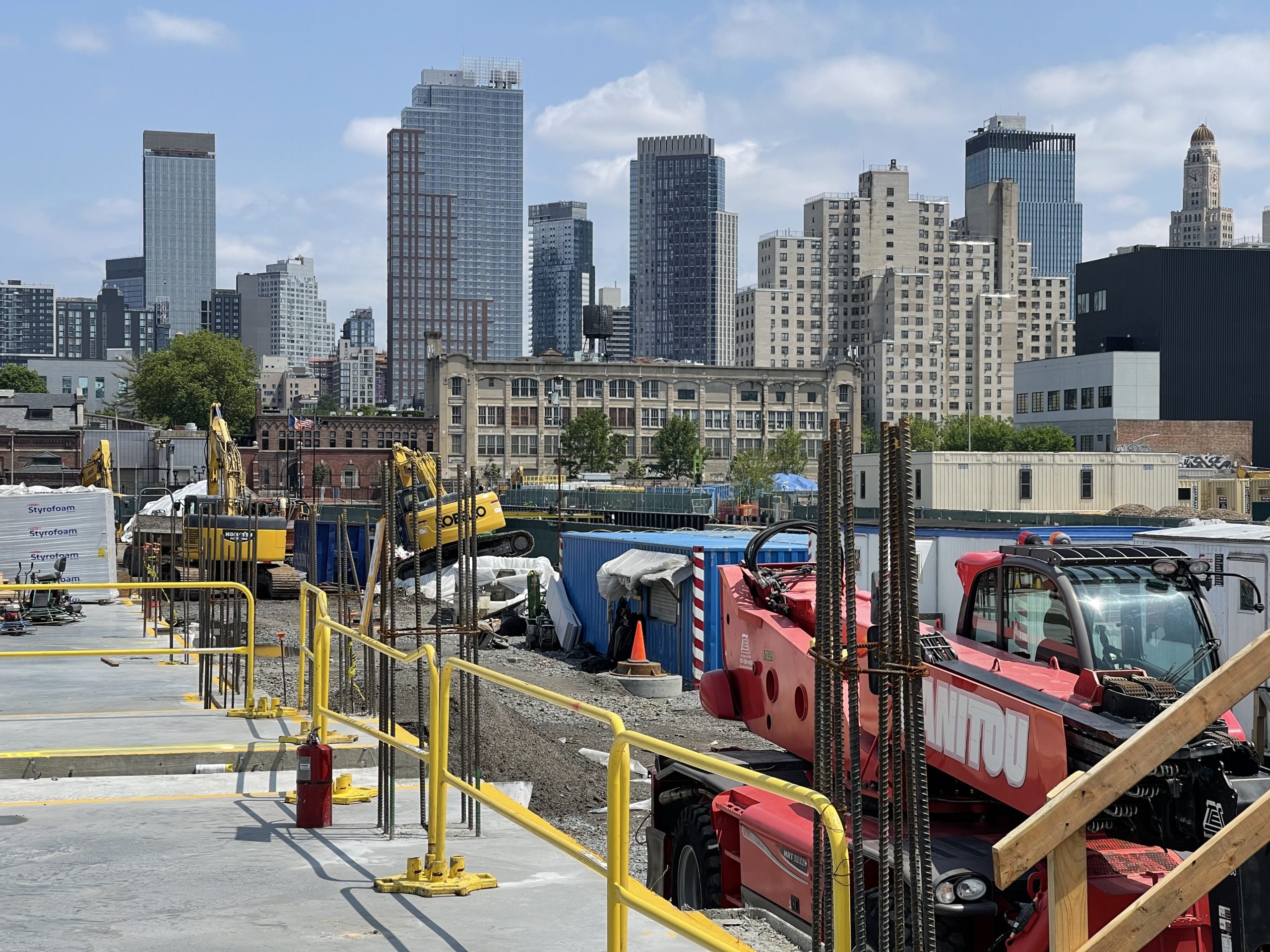
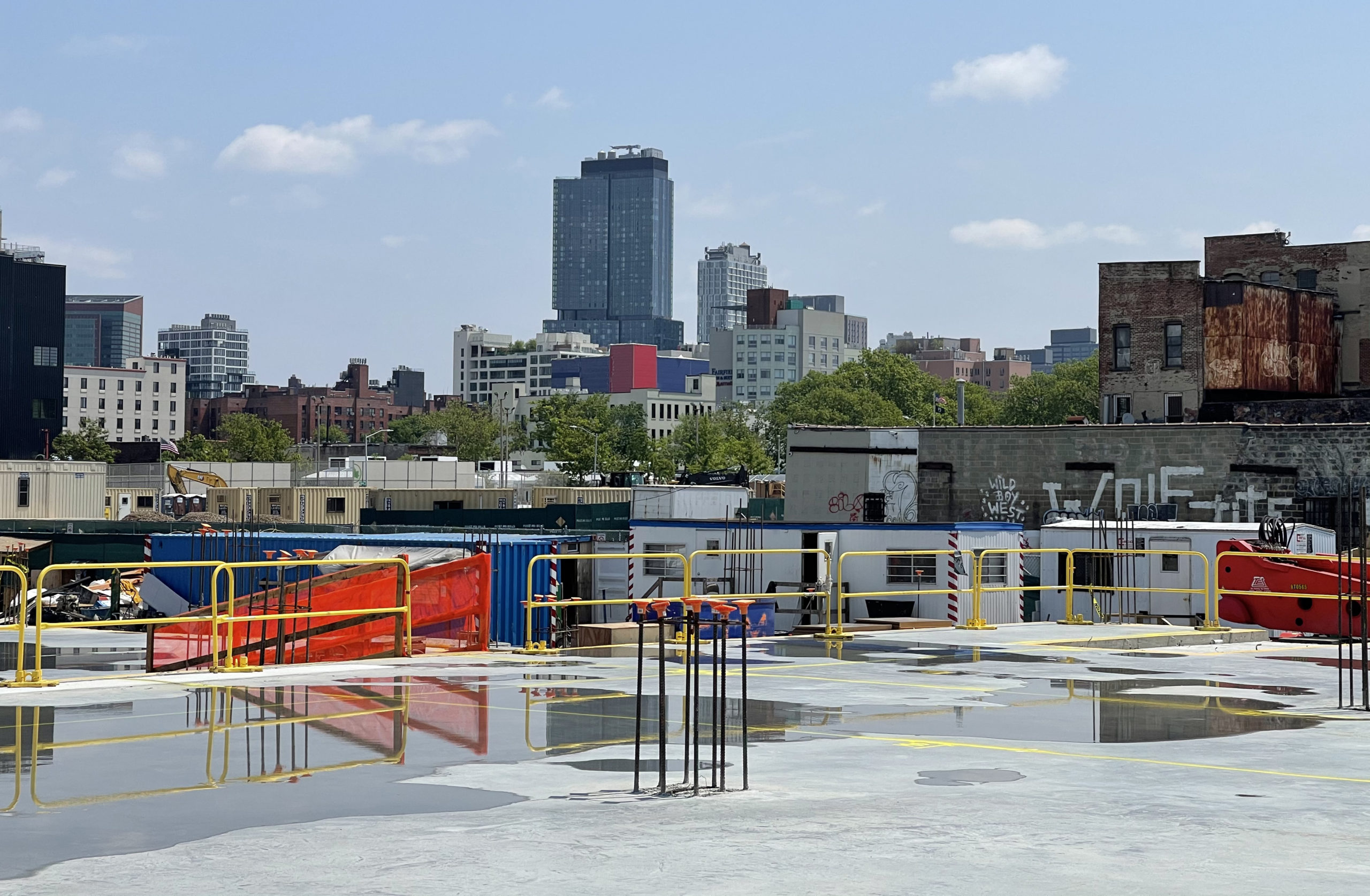

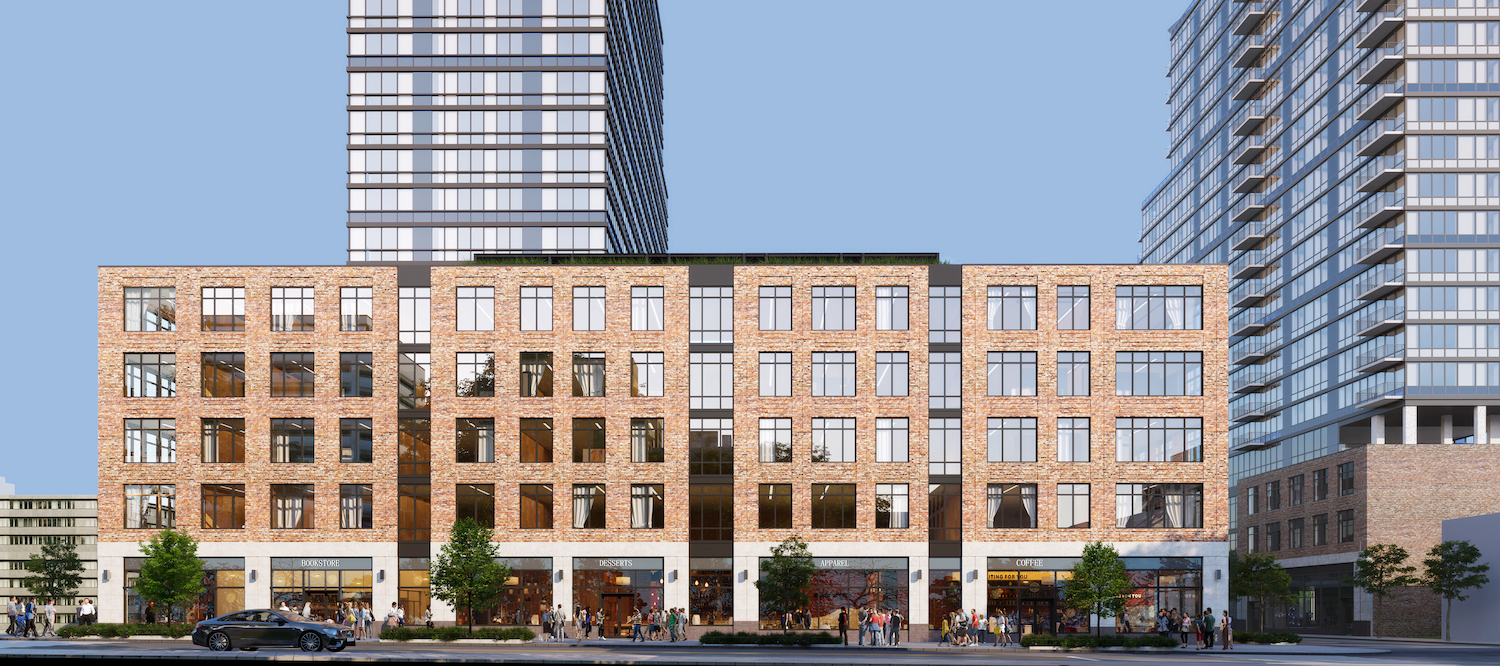

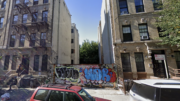
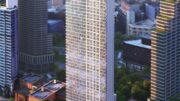


Another non-offensive but unremarkable phoned-in design by SLCE.
The location photos make it feel like this complex is in the middle of “nowhere”?! 🤔
It won’t be once all these new developments start to go up and be finished
Another Revit-default curtainwall/window wall from SLCE.
Gowanus 101
What’s Happening in Gowanus?
The Canal
The Gowanus Canal Was Designated a “Superfund Site”
For over a century, the banks of the Gowanus Canal were line with industry and manufacturing companies, which released their toxic waste into the canal water as well into the ground. In 2010, the federal government identified the Gowanus Canal as one of the most toxic waterways in the entire country. It’s filled with toxins that pose serious public health risks. As a result, it was designated a “Superfund” site, and in 2020, the Environmental Protection Agency began a $1.5 billion cleanup of the canal.
The Land
The Gowanus Neighborhood Has Been Rezoned
In 2021, 82 blocks in Gowanus were changed from mainly industrial use to allowing residential development. The existing industrial buildings being demolished in the neighborhood will soon be replaced by dozens of apartment towers reaching up to 30 stories tall.
Most of the Rezoned Land is Highly Toxic
The vast majority of development sites in Gowanus (see map, below) are filled with cancer-causing toxins due to a century of industrial use, and have been classified by NY State as “Brownfield sites.” Some have toxins as deep as 150 feet.
The Infrastructure
Sewage Frequently Flows Into the Canal
During heavy rains, raw sewage flows into the canal because it exceeds the current sewer system’s capacity. As a result, the EPA has demanded that the City build two enormous “retention” tanks to keep excess sewage from going into the canal.
What’s The Problem?
The Land is Not Being Cleaned Up Fully, Leaving Toxins in the Soil
All of these sites need to be cleaned up before residential buildings can be built. State law requires they be cleaned to “pre-disposal conditions”—as they were before industrial poisoning. However, this is NOT happening. For instance, at some sites, where toxins reach as deep as 150 feet, the State is only calling for developers to clean less than the top 8 feet of contaminated soil.
Toxins Left in the Soil Can Enter Buildings And Threaten Future Residents’ Health
The State itself acknowledges that when certain toxins (“volatile organic compounds” or VOCs) are left in the soil, they can “move into buildings and affect the indoor air quality.”
Rather than remove them entirely, the State has decided that on the development sites, these toxins will be covered, or “capped,” with a slab of concrete. This method of dealing with toxic land, known as creating a “vapor intrusion barrier,” is very risky, and is so unreliable that these sites must be monitored every year, in perpetuity, to ensure that dangerous vapors haven’t penetrated people’s residences.
The Most Deeply-Affordable Housing Is Planned for the Most Seriously Toxic Site
Some of the worst contamination can be found at “Public Place,” a City-owned plot at the corner of Smith and Fifth Streets which for decades housed a manufactured gas plant that created waste known as “coal tar.” Exposure to coal tar has been linked to a variety of cancers. Coal tar at this site has been found to a depth of 150 feet.
The cleanup proposed for this site is woefully inadequate, and only the top 8 feet of soil will be cleaned. It is also the only site in the entire rezone where 100% of the 950 apartments target lower incomes, including units for unhoused individuals and seniors. A school has also been proposed for this site.
Placing the lowest-income residents in danger in this way raises Environmental Justice concerns.
Toxins Are Not Confined To Their Original Sites and Threaten the Health of Existing and Future Residents
Large “plumes” of migrating carcinogenic coal tar have already been found far from their original site in Gowanus, and with flooding and rising groundwater levels from climate change, these and other carcinogens can wind up underneath existing homes and intrude into them.
Fumes from the Toxic Construction Sites Pose a Danger to the Community
The disturbance of the land at these toxic construction sites has caused air monitors to be set off by toxic fumes reaching dangerously high levels, with the community not notified and only discovered after kids in the neighboring playground smelled it and reported it to our electeds.
The Gowanus Canal will be Re-Contaminated With Toxins
Without a full cleanup, toxins from the sites surrounding the canal will seep right back into the canal and re-contaminate it, thereby not only wasting $1.5 billion in taxpayer dollars, but also returning the canal to its dangerously toxic state.
Sewage Retention Tanks Are Not Being Built, and Sewage will continue to flow into the canal—and into our homes
The City is not following the EPA’s timeline to build the required retention tanks, and at this point says that they won’t be complete until after 2030. And the retention tanks are only meant to deal with the current number of residents in the community; they don’t take into account the additional sewage that will be produced by 20,000 planned future residents.
Without the required retention tanks, and given increases in rainfall as a result of climate change, sewage will (and has) backed up into people’s homes.
This is going to be like living in toxic Love Canal. Not thank you!
Thanks for providing all this pertinent information for these luxury public housing developments. The funny thing is that the housing lottery is so rigged to keep real rent burdened residents (mostly POC) from winning an interview for one of these “affordable” Apts
And I bet like the billionaire row towers, 90% of the market rate Apts will be empty and used for laundering money
Some floating turds every now and then never hurt anybody.
The development in Gowanus is quite amazing. Will supercharge the neighborhood and be the next ‘area’ of choice. Can’t wait
K dobbins
State environmental officials waited nearly two years to alert the public that cancer-causing vapors over 20 times the amount considered safe escaped from polluted soil along the Gowanus Canal — and into a nearby shuffleboard club.
The Department of Environmental Conservation learned of the alarming levels of toxic vapors in March 2021 while conducting air-quality tests inside Royal Palms Shuffleboard Club — but the hipster haven remained open throughout, since the agency deemed the century-old building was “safe.”
The agency only documented the stunning finding late last year in public records buried on its website.
On Friday, DEC spokeswoman Haley Viccaro admitted to The Post that it could have done a better job alerting locals to the looming health hazard, and “are evaluating potential improvements to enhance this process and ensure this information is clear and informative of these comprehensive, science-based efforts to protect public health.”
are you moving there ?
Next to a superfund site with the toxic forever polluted canal?
Hope you don’t have children to breathe it all in on a nice summer sweaty day.
Take a whiff next time you go by.
Surprised they are building all this housing near the very polluted canal.
Less poluted every day. Being cleaned up as we speak. No future of industrial discharge. Try optimism.
The chemicals are forever chemicals.
NFA
Give me some of the STUFF you’re smoking if you really believe your own blsht
it’s a super fund site for christs sake.
Guesser –
The retention tanks are being built right now.
Go look for yourself.
Nevins from Butler to Sackett.
Brooklynlove
here’s the real truth.
Gowanus 101
What’s Happening in Gowanus?
The Canal
The Gowanus Canal Was Designated a “Superfund Site”
For over a century, the banks of the Gowanus Canal were line with industry and manufacturing companies, which released their toxic waste into the canal water as well into the ground. In 2010, the federal government identified the Gowanus Canal as one of the most toxic waterways in the entire country. It’s filled with toxins that pose serious public health risks. As a result, it was designated a “Superfund” site, and in 2020, the Environmental Protection Agency began a $1.5 billion cleanup of the canal.
The Land
The Gowanus Neighborhood Has Been Rezoned
In 2021, 82 blocks in Gowanus were changed from mainly industrial use to allowing residential development. The existing industrial buildings being demolished in the neighborhood will soon be replaced by dozens of apartment towers reaching up to 30 stories tall.
Most of the Rezoned Land is Highly Toxic
The vast majority of development sites in Gowanus (see map, below) are filled with cancer-causing toxins due to a century of industrial use, and have been classified by NY State as “Brownfield sites.” Some have toxins as deep as 150 feet.
The Infrastructure
Sewage Frequently Flows Into the Canal
During heavy rains, raw sewage flows into the canal because it exceeds the current sewer system’s capacity. As a result, the EPA has demanded that the City build two enormous “retention” tanks to keep excess sewage from going into the canal.
What’s The Problem?
The Land is Not Being Cleaned Up Fully, Leaving Toxins in the Soil
All of these sites need to be cleaned up before residential buildings can be built. State law requires they be cleaned to “pre-disposal conditions”—as they were before industrial poisoning. However, this is NOT happening. For instance, at some sites, where toxins reach as deep as 150 feet, the State is only calling for developers to clean less than the top 8 feet of contaminated soil.
Toxins Left in the Soil Can Enter Buildings And Threaten Future Residents’ Health
The State itself acknowledges that when certain toxins (“volatile organic compounds” or VOCs) are left in the soil, they can “move into buildings and affect the indoor air quality.”
Rather than remove them entirely, the State has decided that on the development sites, these toxins will be covered, or “capped,” with a slab of concrete. This method of dealing with toxic land, known as creating a “vapor intrusion barrier,” is very risky, and is so unreliable that these sites must be monitored every year, in perpetuity, to ensure that dangerous vapors haven’t penetrated people’s residences.
The Most Deeply-Affordable Housing Is Planned for the Most Seriously Toxic Site
Some of the worst contamination can be found at “Public Place,” a City-owned plot at the corner of Smith and Fifth Streets which for decades housed a manufactured gas plant that created waste known as “coal tar.” Exposure to coal tar has been linked to a variety of cancers. Coal tar at this site has been found to a depth of 150 feet.
The cleanup proposed for this site is woefully inadequate, and only the top 8 feet of soil will be cleaned. It is also the only site in the entire rezone where 100% of the 950 apartments target lower incomes, including units for unhoused individuals and seniors. A school has also been proposed for this site.
Placing the lowest-income residents in danger in this way raises Environmental Justice concerns.
Toxins Are Not Confined To Their Original Sites and Threaten the Health of Existing and Future Residents
Large “plumes” of migrating carcinogenic coal tar have already been found far from their original site in Gowanus, and with flooding and rising groundwater levels from climate change, these and other carcinogens can wind up underneath existing homes and intrude into them.
Fumes from the Toxic Construction Sites Pose a Danger to the Community
The disturbance of the land at these toxic construction sites has caused air monitors to be set off by toxic fumes reaching dangerously high levels, with the community not notified and only discovered after kids in the neighboring playground smelled it and reported it to our electeds.
The Gowanus Canal will be Re-Contaminated With Toxins
Without a full cleanup, toxins from the sites surrounding the canal will seep right back into the canal and re-contaminate it, thereby not only wasting $1.5 billion in taxpayer dollars, but also returning the canal to its dangerously toxic state.
Sewage Retention Tanks Are Not Being Built, and Sewage will continue to flow into the canal—and into our homes
The City is not following the EPA’s timeline to build the required retention tanks, and at this point says that they won’t be complete until after 2030. And the retention tanks are only meant to deal with the current number of residents in the community; they don’t take into account the additional sewage that will be produced by 20,000 planned future residents.
Without the required retention tanks, and given increases in rainfall as a result of climate change, sewage will (and has) backed up into people’s homes.
Construction has officially begun on the first of two tanks that will be able to hold a combined 12 million gallons of wastewater.
The goal is to prevent severe flooding and further pollution of the canal.
“These storms are going to continue coming. Climate change is here and the storms are going to become more frequent,” said Martin Bisi, a local business owner and member of the grassroots organization Voice of Gowanus. He says the city’s $1.6-billion-dollar project falls short.
“It’s not enough to take care of the environmental problems in Gowanus,” said Bisi. “It does not address the profound contamination that we have in the sites around the canal.”
Gowanus has seen a surge in residents in recent years and thousands more are expected to arrive in the near future The Gowanus rezoning, which was approved in 2021, will add roughly 8,000 new housing units to the neighborhood.
“These tanks won’t be built until 2030 and in the meantime, they’ll continue building this housing that will bring more residents in and tens of thousands of toilets, and right now it doesn’t take much rain for the sewer system to go over capacity,” said Bisi.
This project follows a years-long struggle to clean up the canal after the Environmental Protection Agency designated it a “Superfund site” in 2010.
Bisi says the only way to keep residents safe from harmful toxins is to restore the canal to pre-contamination conditions.
“Full comprehensive cleanup of all of the worst sites and there’s many of them. There’s up to 30. And of course, that means halting construction on those sites fully,” he said.
From NY Post
State environmental officials waited nearly two years to alert the public that cancer-causing vapors over 20 times the amount considered safe escaped from polluted soil along the Gowanus Canal — and into a nearby shuffleboard club.
The Department of Environmental Conservation learned of the alarming levels of toxic vapors in March 2021 while conducting air-quality tests inside Royal Palms Shuffleboard Club — but the hipster haven remained open throughout, since the agency deemed the century-old building was “safe.”
The agency only documented the stunning finding late last year in public records buried on its website.
On Friday, DEC spokeswoman Haley Viccaro admitted to The Post that it could have done a better job alerting locals to the looming health hazard, and “are evaluating potential improvements to enhance this process and ensure this information is clear and informative of these comprehensive, science-based efforts to protect public health.”
The revelations only came to light thanks to the grassroots group Voice of Gowanus, which hired an Ithaca, N.Y.-based environmental database firm, Toxics Targeting, that recently discovered the damning DEC documents.
The records showed March 2021 air levels of the cancer-causing chemical trichloroethylene, an industrial solvent, were nearly 22 times above acceptable levels at the shuffleboard club.
“The DEC in 2021 should’ve put up signs in the club, published public notices in local papers, and sent mail alerts to people in the neighborhood,” said Walter Hang, who heads Toxics Targeting. “All they did was make obscure references in dense technical documents regular citizens wouldn’t know about or can’t decipher.”
I hope they build truly affordable housing in this Gowanus neighborhood that’s truly needed, to help all incomes from all types of low, moderate, and senior housing, and ‘some’ market rate units, but we will see